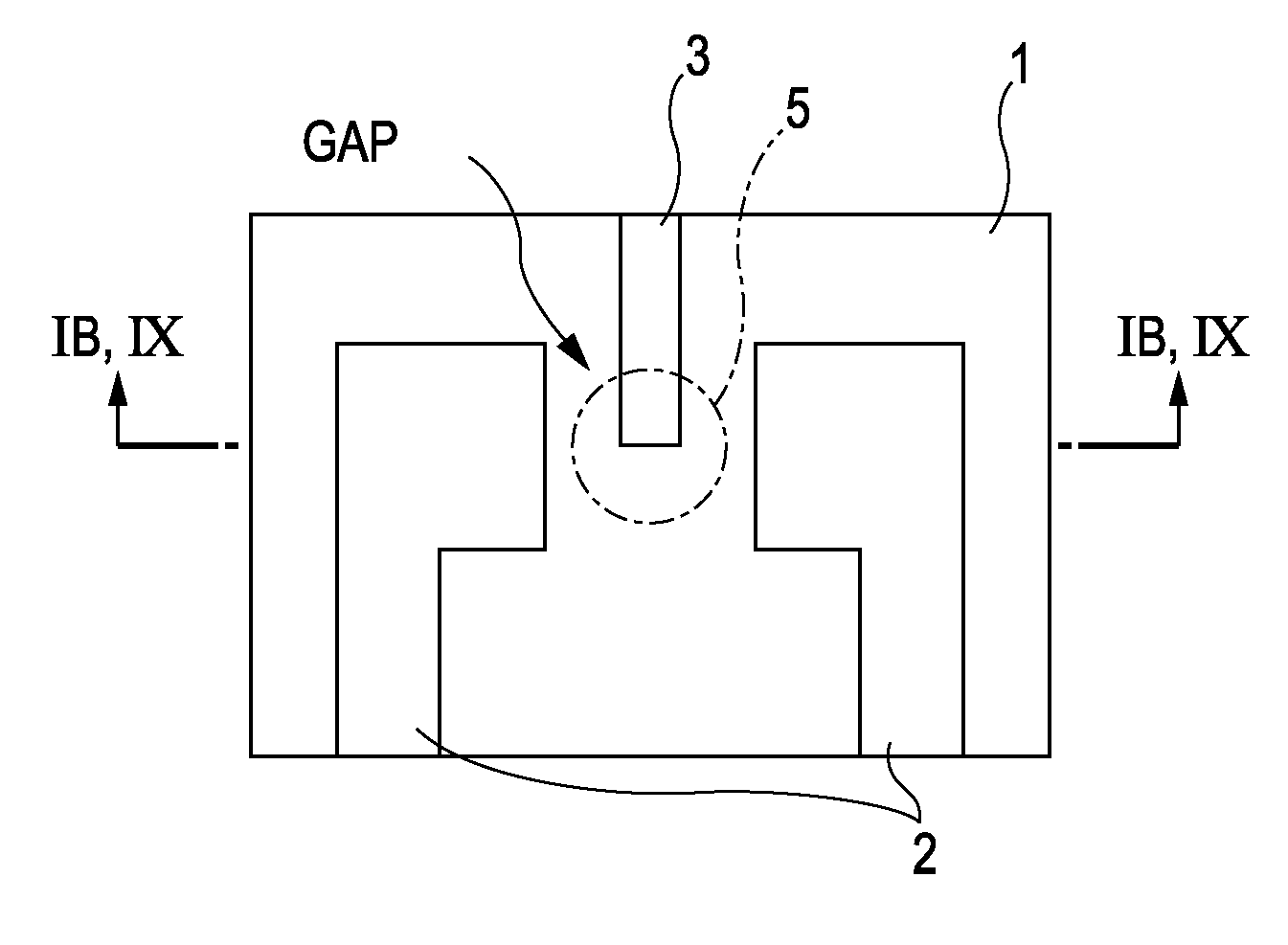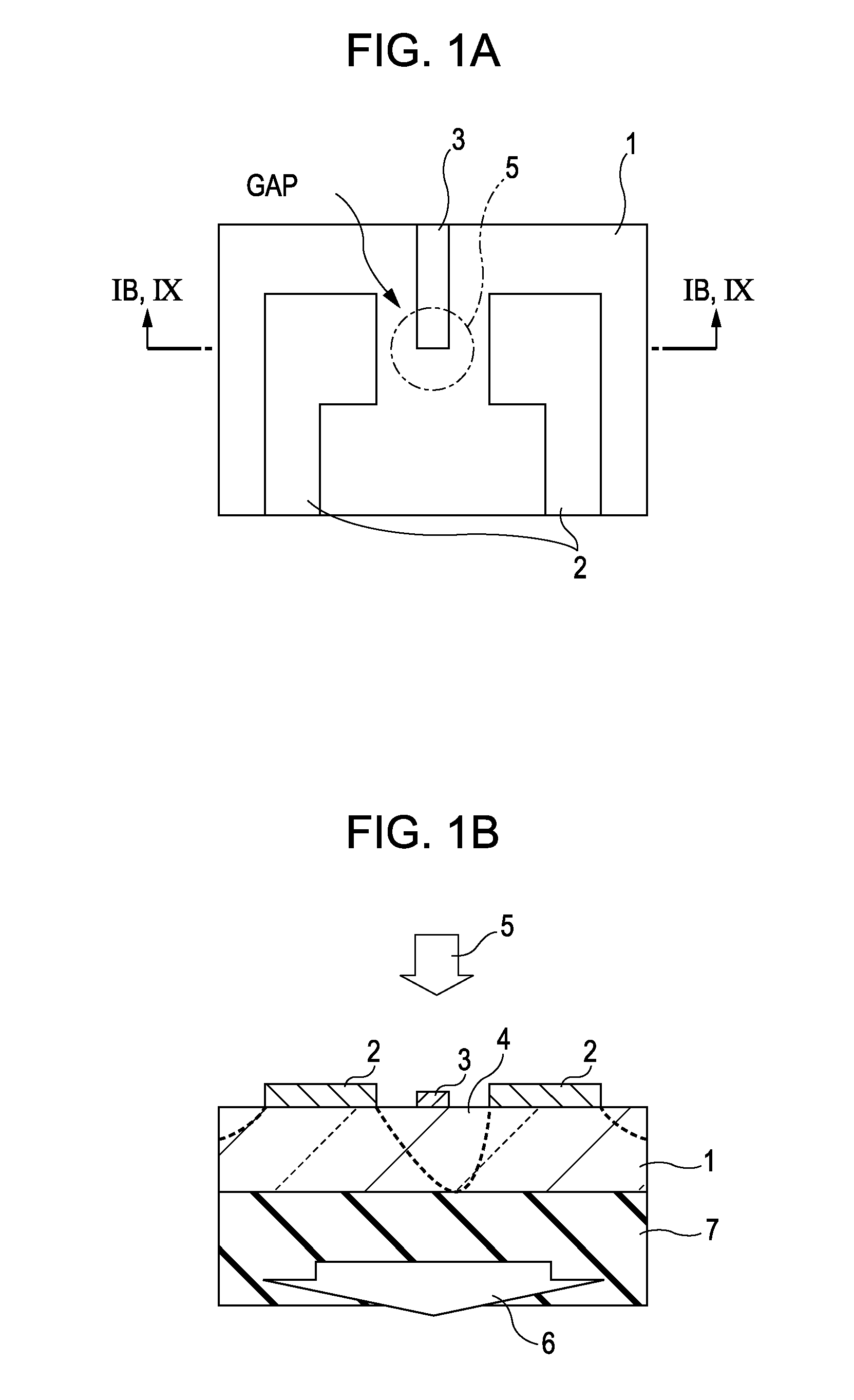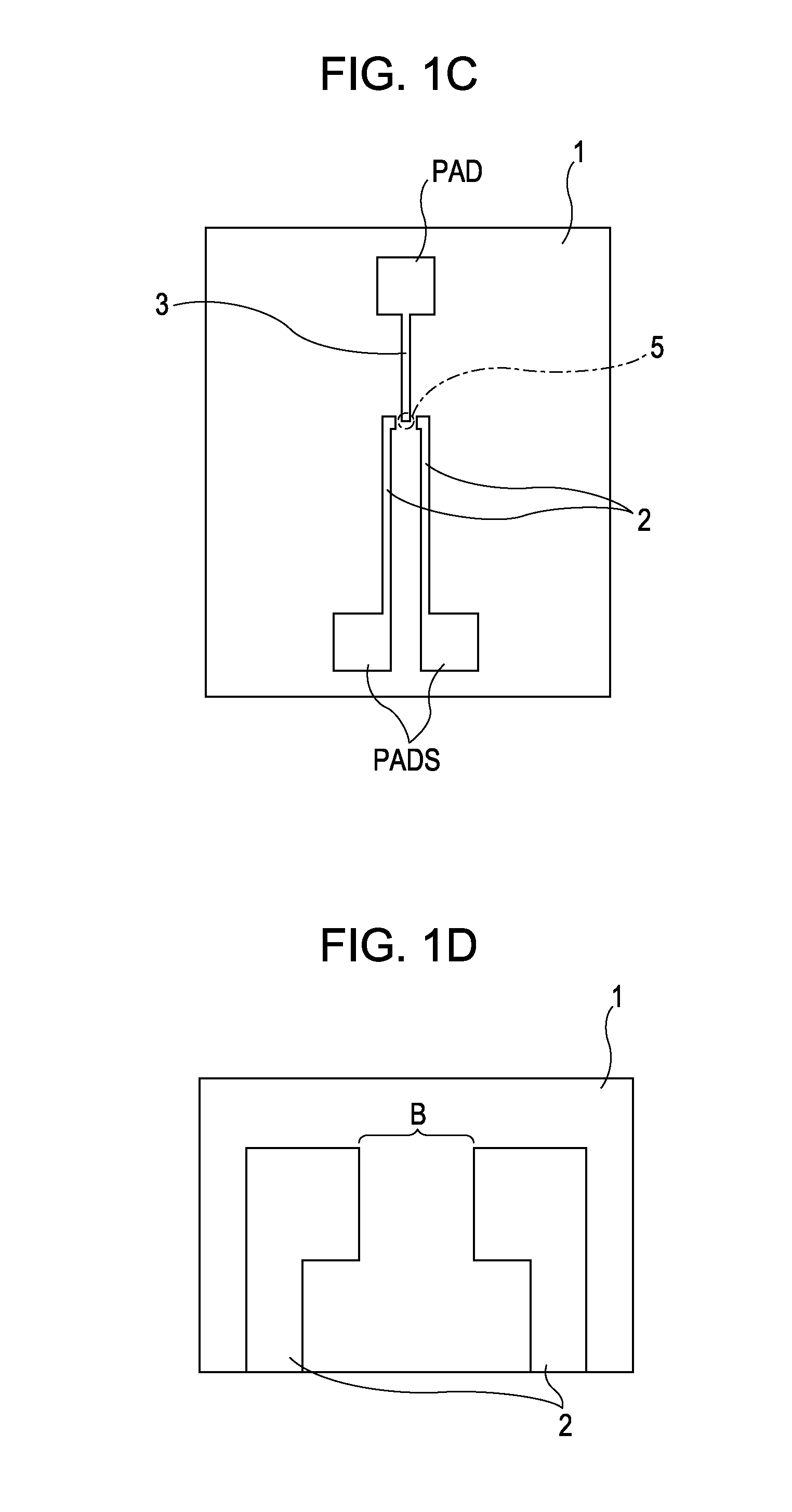Photoconductive device, and terahertz wave generation and detection apparatuses each using the photoconductive device
a photoconductive layer and terahertz wave technology, applied in the field of photoconductive devices, can solve the problems of damage to the photoconductive device, the resistance of the photoconductive layer is reduced, and it is difficult to claim that such problems have been solved
- Summary
- Abstract
- Description
- Claims
- Application Information
AI Technical Summary
Benefits of technology
Problems solved by technology
Method used
Image
Examples
first embodiment
[0036]A photoconductive device according to a first embodiment of the invention is described. FIG. 1A is a top view of a general configuration of a photoconductive device according to the present embodiment, FIG. 1B is a sectional view taken along the line IB-IB of FIG. 1A, and FIG. 1C is a general view of the photoconductive device according to the present embodiment. FIG. 1A illustrates a magnified view of a portion of FIG. 1C where a terahertz wave 6 is generated by irradiation with excitation light 5. Referring to FIGS. 1A to 1C, the photoconductive device according to the present embodiment includes a substrate 7, a photoconductive layer 1, a pair of electrodes 2 constituted by first and second electrodes, and a third electrode 3. In the present embodiment, a group of electrodes is the pair of electrodes constituted by the first and second electrodes formed in such a manner as to be directly or indirectly in contact with the photoconductive layer 1. However, as long as an elect...
second embodiment
[0055]A second embodiment according to the photoconductive device of the present invention relates to a modification example of the above described photoconductive device. Descriptions of the common portions described above are omitted. FIG. 4A is a top view of a photoconductive device of the present embodiment and FIG. 4B is a sectional view taken along the line IVB-IVB of FIG. 4A. Referring to FIG. 4B, the difference from the photoconductive device of the first embodiment is that a third electrode 3 is arranged between a photoconductive layer 1 and a substrate 7. To manufacture the photoconductive device according to the present embodiment, it is necessary to arrange the third electrode 3 between the photoconductive layer 1 and the substrate 7. A transcription process can be used for this purpose. Here, for example, a buffer layer, an etch stop layer, and the photoconductive layer 1 are formed on a substrate made of an appropriate material, using a molecule beam epitaxial growth m...
third embodiment
[0058]A third embodiment according to the photoconductive device of the present invention relates to a modification example of the photoconductive devices described above. Descriptions of the common portions described above are omitted. FIG. 8A is a top view of a photoconductive device of the present embodiment and FIG. 8B is a sectional view taken along the line VIIIB-VIIIB of FIG. 8A. The difference from the above-described photoconductive devices is that a third electrode 3 is transparent to the wavelength of excitation light 5. An example of a material that can be used is ITO (indium tin oxide). By using a transparent electrode as the third electrode 3, the amount of the excitation light 5 input to a photoconductive layer 1 can be increased. Further, referring to FIGS. 8A and 8B, since the third electrode 3 does not block the excitation light 5, the third electrode 3 can be made larger than in the case illustrated in FIG. 1A. This makes it easy to control a depletion layer 4 in ...
PUM
| Property | Measurement | Unit |
|---|---|---|
| wavelength band | aaaaa | aaaaa |
| wavelength band | aaaaa | aaaaa |
| temperature | aaaaa | aaaaa |
Abstract
Description
Claims
Application Information
 Login to View More
Login to View More - R&D
- Intellectual Property
- Life Sciences
- Materials
- Tech Scout
- Unparalleled Data Quality
- Higher Quality Content
- 60% Fewer Hallucinations
Browse by: Latest US Patents, China's latest patents, Technical Efficacy Thesaurus, Application Domain, Technology Topic, Popular Technical Reports.
© 2025 PatSnap. All rights reserved.Legal|Privacy policy|Modern Slavery Act Transparency Statement|Sitemap|About US| Contact US: help@patsnap.com



